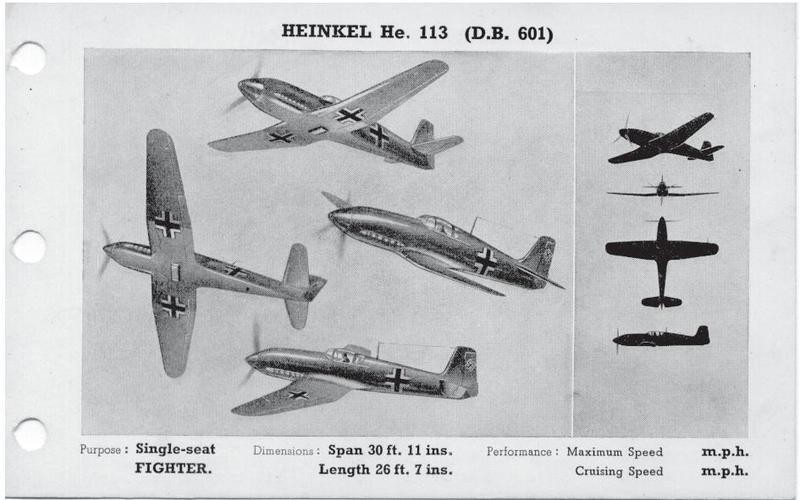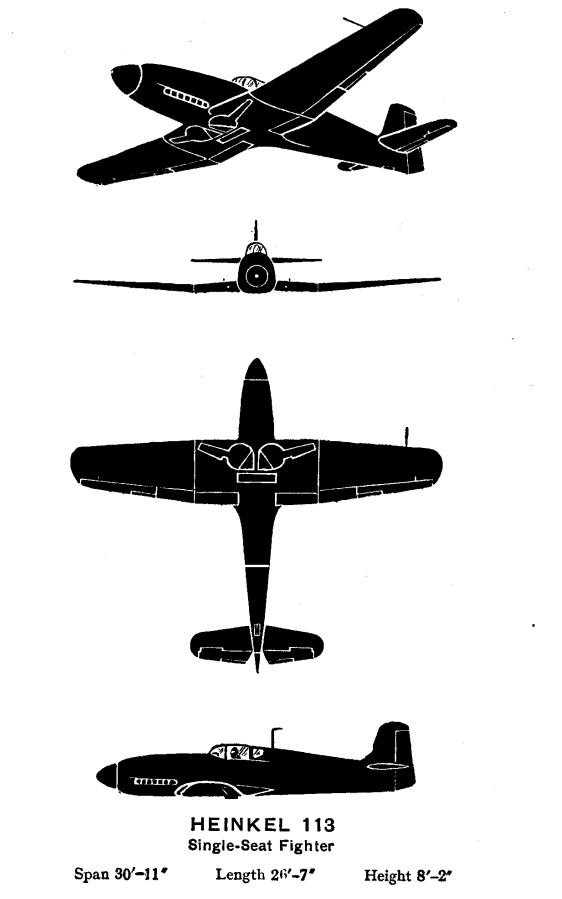| Type | He 100D-1(= He 113) single seat fighter |
| Engine | 1 Daimler-Benz DB 601M with 3-bladed constant speed propeller |
| Dimensions | Length 8,2 m, height 3,6 m , span 9,42 m , wing area 14,6 m2 , |
| Weights | Empty 1810 kg, loaded 2500 kg , max. take off weight |
| Performance | Max.. speed 670 km/h at 5000 m, cruising speed , range 1010 km , endurance , service ceiling 11000 m , climb to 2000 m in 2,2 min.x |
| Armament | 1 20 mm MG FF cannon, engine mounted as a Motorkanone 2 7.92 mm MG 17 machine guns |

